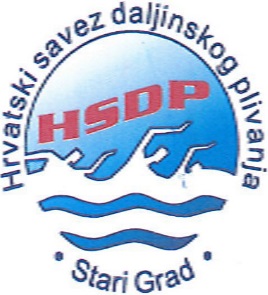MAY 2 2000 MEMORANDUM FOR DEPUTY ASSISTANT SECRETARY
2 GENERAL SECRETARIAT ADMINISTRATIVE MEMORANDUM NO 543 MEMORANDUM DATE OCTOBER 3 1980 SG10180
3 MODEL OF A MEMORANDUM OF ASSOCIATION
4 MODEL OF MEMORANDUM OF ASSOCIATION FOR
7 TEMPLATE FOR THE MEMORANDUM OF ASSOCIATION
MAY 2 2000 MEMORANDUM FOR DEPUTY ASSISTANT SECRETARY
MEMORANDUM FOR
.
MAY 2, 2000
MEMORANDUM FOR DEPUTY ASSISTANT SECRETARY OF THE ARMY
(ENVIRONMENT, SAFETY AND OCCUPATIONAL HEALTH)
DEPUTY ASSISTANT SECRETARY OF THE NAVY
(ENVIRONMENT AND SAFETY)
DEPUTY ASSISTANT SECRETARY OF THE AIR FORCE
(ENVIRONMENT, SAFETY AND OCCUPATIONAL HEALTH)
DIRECTOR, DEFENSE LOGISTICS AGENCY
SUBJECT: Interim Policy on Integration of Natural Resource Injury Responsibilities and Environmental Restoration Activities
Under
the Comprehensive Environmental Response, Compensation and Liability
Act (“CERCLA”), 42 U.S.C. § 9601 et
seq.
("CERCLA"), the Department of Defense (“DoD”)
Components (“Components”) “Components”) )
Military Departments (Department of Army, Department of Navy and
Department of Air Force))
are “trustees” on behalf of the public for natural
resources they manage or control.1
The purpose of this memorandum is to establish an interim policy on
the Components’ Military
Departments
responsibilities to address Natural Resource Injury (“NRI”)
at sites administered by the Components Military
Departments
where they are both a natural resource trustee (“Trustee”)
and – as a potentially responsible party (“PRP”) –
the lead response agency for environmental restoration (“response”
or “cleanup”) actions.2,3
I. Policy
It
is DoD policy that the Components Military
DepartmentsMilitary Departments
identify NRI and,
whenever
practicable, redress it as part of the site assessment,
investigation, and remedy selection and implementation processes for
cleanup actions.4
Consistent with § 104(b)(2) of CERCLA, the Components Military
Departments
shall seek to coordinate these actions with other Trustees at the
site, which may include other Federal entities, States and Tribes.
The Components Military
Departments
should begin such coordination early in the site assessment,
investigation, and remedy selection process, so as to assess and
address NRI caused by releases of CERCLA hazardous substances,
minimize NRI during cleanup of such hazardous substances, and avoid
delays in completing cleanup. This policy is not intended to state
or imply that other Trustees have a decision-making role in choosing
or implementing remedies. This policy applies to all types of
cleanup of CERCLA hazardous substances conducted under CERCLA, the
Resource Conservation and Recovery Act, and the Defense Environmental
Restoration Program.5
The
objectives of this policy are several: to promote earlier and more
complete consideration of the risks to natural resources associated
with past activities and cleanup alternatives; to ensure that
Components Military
Departments
installations
exercise their statutory Trustee authorities to address NRI on behalf
of the public; to lower the total life-cycle costs of the Components’
Military
Department's
s’
remediation programs; and, to reduce the potential for response cost
recovery or natural resource damage claims against the Components.
Military
Departments.
II. Natural Resource “Injury” versus Natural Resource “Damages”
It is important to distinguish between Natural Resource Injury, the subject of this interim policy, and Natural Resource Damages. Natural Resource Damages are commonly determined through the use of a Natural Resource Damage Assessment (“NRDA”), and are outside the scope of this document. Natural Resource Injury refers to harm, more specifically a measurable adverse change in the chemical or physical quality or viability of a natural resource caused by the release or threatened release of a hazardous substance. Natural Resource Damages, on the other hand, refer to, among other things, the compensation which may be sought by Natural Resource Trustees for injury to natural resources, including in some cases compensation for economic losses claimed to have been incurred as a result of losing “services” provided by an injured natural resource, e.g., drinking water in the case of a groundwater aquifer injured by a release of hazardous substances. This policy authorizes Components to investigate NRI in the course of conducting ecological risk assessments, which are normally done as part of the Remedial Investigation/Feasibility Study (“RI/FS”) for cleanup projects, and to address NRI as part of the response action.
III. Role of the Ecological Risk Assessment in Integrating NRI and Cleanup Activities
The
Components Military
Departments
often conduct an Ecological Risk Assessment (“ERA”) as
part of the RI/FS phase of the cleanup process.6
An ERA evaluates the likelihood that a release of hazardous
substances may cause adverse ecological effects. The ERA process,
among other things: describes the sources and distribution of
harmful contaminants; identifies sensitive organisms or populations;
characterizes potential exposure pathways; and, estimates the
intensity and extent of exposures at a site.
While
an ecological risk assessment and a natural resource damage
assessment (which is performed, if at all, only after remedy
selection) are intended to address different concerns, both examine
NRI. In individual cases, it may be cost efficient and increase the
utility of ERAs to collect additional appropriate information
regarding NRI during the ERA process. C Components Installations
are encouraged to explore these possibilities with the other natural
resource trustees during design of the ERA.
Components
Installations
should consider the resulting information in two ways when selecting
alternative response actions: first, to ascertain which response
alternative may best redress NRI caused by past practices; and
second, to determine whether implementation of a response alternative
will itself cause additional NRI. Taking both considerations into
account, whenever practicable and otherwise consistent with the
remedy selection process specified by the National Contingency Plan,
the Components Military
Departments
should select a response action that will result in the least amount
of residual NRI once the response action is complete.
IV. Conforming Guidance
Components
Military
Departments
may issue supplemental policy and implementation guidance consistent
with this policy. Such guidance must first be reviewed by this
office. My point of contact for this policy is Ms. Patricia Ferrebee
at (703) 695-6107,
Sherri W. Goodman
Deputy Under Secretary of Defense
(Environmental Security)
1 DoD has delegated its authorities as CERCLA natural resource trustee to the Component heads, with authority to redelegate as appropriate. Service secretaries. (DoDI 4715.7 “Environmental Restoration Program”).
2 See, e.g., 42 U.S.C. §§ 9607(f) and 9607(a)(4)(C), Executive Order 12580, 33 U.S.C.
§§
1321(f) and 2706, 40 CFR Part 300, Subpart G, Executive Order
12777, and DoDI 4715.7. The Components Military
Departments
also may have responsibilities for NRI under other authorities.
3
This policy covers sites at which the Component Military
Department
is an “owner” or “operator” under CERCLA.
It is not applicable to sites at which the Component Military
Department
is solely a generator of hazardous substances, e.g.,
“third-party” sites, .or to sites at which a Component
entity conducts response actions although it is not a Trustee, e.g.,
formerly used defense sites. DoD will considering issuing related
guidance in connection with those sites in the future.
4 Components determine what is "practicable" based on factors including cost and cost-effectiveness, Component ERA fund availability, risk prioritization, and technical and engineering feasibility.
5 However, this policy is not intended to require reopening of response action decisions already reached.
6 See, e.g., 63 Fed. Reg. 26846 (14 May 1998).
MEMORANDUM OF AGREEMENT BETWEEN “LIGHT BEYOND THE BULB”
MEMORANDUM PONUĐAČA NAZIV PONUĐAČA ADRESA TELEFON
TECHNOLOGY MEMORANDUM OF UNDERSTANDING ADVICE REGARDING THE
Tags: assistant secretary, deputy assistant, secretary, memorandum, assistant, deputy
- ANTROPOLOGÍA (7 LISTAS) LISTA 2 ABYA YALA EL TREN
- ANEXO I SOLICITUD PARA PARTICIPAR EN LA CONVOCATORIA PARA
- PERIODIC FUNCTIONS YEAR LEVEL 11–12 UNIT OF WORK CONTRIBUTED
- MINISTÉRIO DO ESPORTE SECRETARIA EXECUTIVA SUBSECRETARIA DE PLANEJAMENTO ORÇAMENTO
- FUNDAT L’ANY 1924 BEGUES SETEMBRE DEL 2011 EN NOM
- 12 Report no 6811 Petition 109503 Admissibility Simeón Miguel
- CHILDREN AND FAMILIES PROCEDURE FOR THE ELECTION OF STAFF
- INSTITUTO SUPERIOR DEL PROFESORADO N° 6 “DR LEOPOLDO CHIZZINI
- STAFF NURSE III AND HHH III RENEWAL PACKET A
- PROPUESTAS DE ARGENTINA EN EL MARCO DE LA EPR
- THE EFFECTS OF THE CRUSADES GLOBAL HISTORY AND GEOGRAPHY
- 2 BACHILLERATO LENGUA Y LITERATURA IES “DON BOSCO” PROFESORA
- THEMES AND SYMBOLS IN MACBETH SLEEP INSOMNIA – UPON
- 2011 MUNSTER ROTARY RUNAROUND 10K OVERALL FINISH LIST
- CV RESUMIDO (ACTUALIZADO EN ENERO 2020) CASTELLANO JOSÉ MIGUEL
- GRADUATE ADMISSIONS 20082009 THE ACADEMIC REGISTRAR OF MAKERERE UNIVERSITY
- LIST OF PLAN OF THESIS OF PG STUDENTS ADMITTED
- QUIZ 2 – SAMPLE SOLUTIONS PAGE 2 1 THE
- DEPARTAMENTO DE COMUNICACIÓN Y PSICOLOGÍA SOCIAL DEPARTAMENT DE COMUNICACIÓ
- 2DO CUATRIMESTRE 20152016 PROGRAMA DE ESTUDIOS SUPERIORES EL REGENERACIONISMO
- UNITÉ D ÉLECTRICITÉ ET ÉLECTROTECHNIQUE UNITÉ D ÉLECTRICITÉ ET
- MISIÓN COMERCIAL A URUGUAY Y PARAGUAY MONTEVIDEO Y ASUNCIÓN
- MORTON TOWNSHIP I PURPOSE MORTON TOWNSHIP IS A SUBDIVISION
- 2ª EDICIÓN LA CROQUETA DE BILBAO PRESENTADAS 11 TIPOS
- PORTARIA Nº DE DE DE 201X
- PROJET DE DELIBERATION FIXANT LES AUTORISATIONS D’ABSENCE ACCORDEES DANS
- CHARTER 08 FRAMER LIU XIAOBO AWARDED NOBEL PEACE PRIZE
- AUN NO HEMOS ENCONTRADO UN MECANISMO QUE NO CONTENGA
- SUBMISSION FORM FOR HIGHER DOCTORATE THREE COPIES OF THE
- UNIVERSITAT POLITECNICA DE VALENCIA BOLETÍN DE ADHESIÓN “CUM LAUDE
 AIDE À L’INSTALLATION DANS UN LOGEMENT ETUDIANT
AIDE À L’INSTALLATION DANS UN LOGEMENT ETUDIANT PÁGINAS PARA CONSULTAR HOTELES U HOSTALES HOTELES CON CONVENIO
 INEL 4206 SPRING 2002 EXÁMEN II 101921 NOMBRE
INEL 4206 SPRING 2002 EXÁMEN II 101921 NOMBRE TEMELJEM ČLANKA X STATUTA EKONOMSKE ŠKOLE PULA (U DALJNJEM
 HABIENDO-CURSADO-MECANICA
HABIENDO-CURSADO-MECANICA HRVATSKI SAVEZ DALJINSKOG PLIVANJA CROATIAN LONG DISTANCE SWIMMING FEDERATION
HRVATSKI SAVEZ DALJINSKOG PLIVANJA CROATIAN LONG DISTANCE SWIMMING FEDERATIONPIECZĄTKA ZAKŁADU OPIEKI ZDROWOTNEJ LUB PRAKTYKI LEKARSKIEJ MIEJSCOWOŚĆ
DEFINITENESS AND SPECIFICITY IN MAURITIAN CREOLE A SYNTACTIC AND
 2021-099-LR---Strike-Bold-Carnival-and-Amusement-Safety---8422
2021-099-LR---Strike-Bold-Carnival-and-Amusement-Safety---8422PAŃSTWOWA INSPEKCJA OCHRONY ROŚLIN I NASIENNICTWA INTERNETOWY SYSTEM SYGNALIZACJI
IDEAS FOR INCREASING RETURN OF CONSENT FORMS INDIVIDUAL INCENTIVES
 SHEET NO1 OF5 TENDER SPECIFICATION NO CLW MS
SHEET NO1 OF5 TENDER SPECIFICATION NO CLW MS 2002 GRUPA A ZADANIE 1 ZNALEŹĆ MACIERZ X TAKĄ
2002 GRUPA A ZADANIE 1 ZNALEŹĆ MACIERZ X TAKĄTOO SMALL A WORLD CATHOLIC SISTERS AS GLOBAL MISSIONARIES
12 FILLING OUT DESCRIPTION OF THE APPLICATION
 J ULY 2018 PROGRAM FACT SHEET RECONNAISSANCE AND FEASIBILITY
J ULY 2018 PROGRAM FACT SHEET RECONNAISSANCE AND FEASIBILITYPROCESO SELECCIÓN DIRECTORES MADRIDESTE 1 PORCENTAJE DE CANDIDATOS SUSPENDIDOS
 J ROMA LDA WWWJROMAPT SISTEMA BÁSICO DE ÓPTICA PASCO
J ROMA LDA WWWJROMAPT SISTEMA BÁSICO DE ÓPTICA PASCO NEVADA DEPARTMENT OF TAXATION USE TAX QUESTIONS AND ANSWERS
NEVADA DEPARTMENT OF TAXATION USE TAX QUESTIONS AND ANSWERS ŞCOALA CU CLASELE IVIII NR 206 ALEEA ARINIŞ NR
ŞCOALA CU CLASELE IVIII NR 206 ALEEA ARINIŞ NR